Railway Station
Station Road
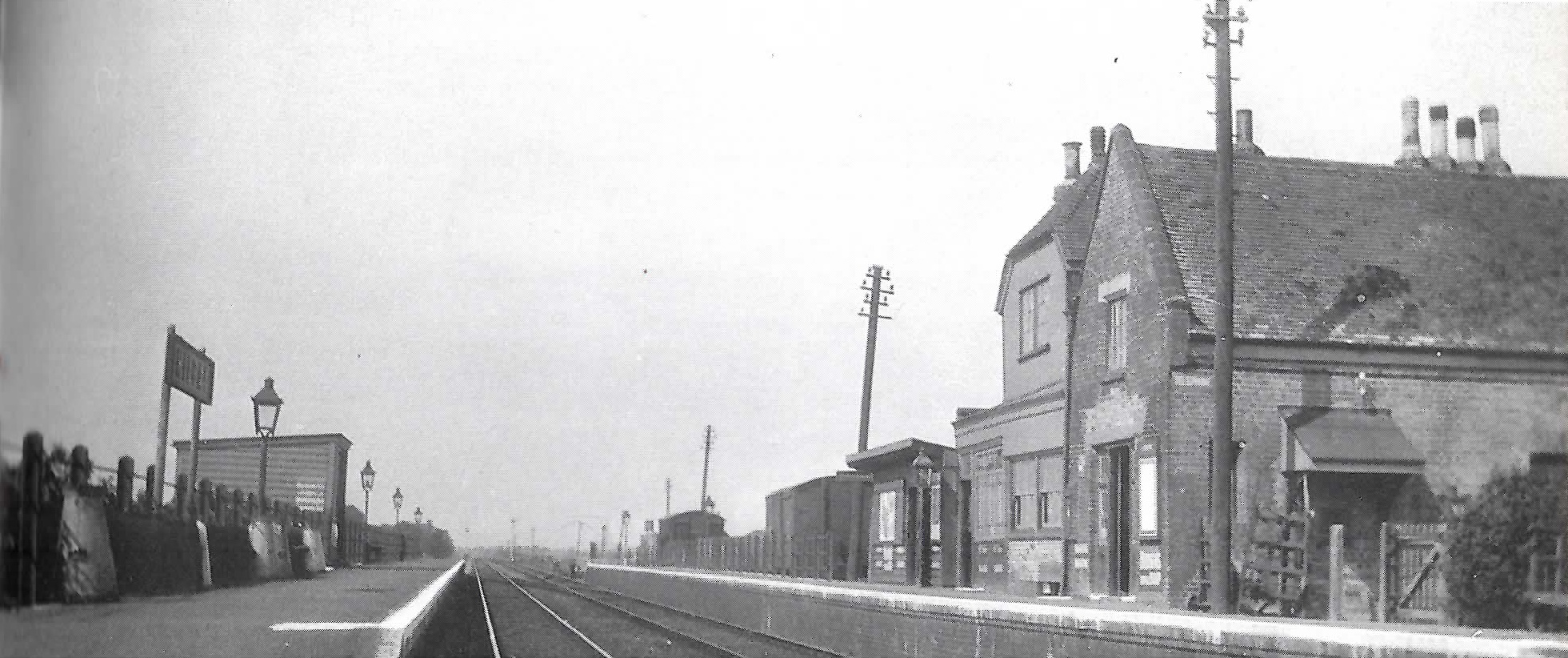 Reproduced from: Ely to Kings Lynn published by
Middleton Press
Reproduced from: Ely to Kings Lynn published by
Middleton Press
1847 Opening
In the summer of 1845 an act passed through parliament allowing the construction of a railway line from Lynn to Ely. This was at the height of railway mania and it was not until early 1846 that surveyors and engineers became available to oversee site works. The first part of the line from Lynn to Denver was completed by early 1847. The second part of the line from Denver to Ely was started shortly after the first in the summer of 1846. This section proved more difficult as a lengthy embankment had to be raised from Denver to Hilgay in order to carry the line over the Ouse at the required height.
The railway station, opened as 'Hilgay Fen' on 25th October 1847. It was situated approximately one mile west of the main Ten Mile Bank village, where the Lynn and Ely railway line crossed Long Drove, the former name of Station Road.
It may seem strange to be named Hilgay, but if you consider the parish of Hilgay extended as far west as beyond the 100 foot river bordering on to the parish of Welney, it placed the station almost in the centre of Hilgay Fen. Although it served both passengers and goods, it seemed better placed for farm produce than for passenger travel. The road bridge across the river Ouse would not appear for another 33 years, meaning it was most inconvenient for the residents of Hilgay village. In a way, the location of the station raised a greater need for a road bridge to be built.
The first train left from Lynn to Ely on Monday morning and returned in the afternoon. On the return journey the train was stopped at Ouse Bridge station to allow the passengers to view the structure that allowed the line to cross the Ouse and Wissey rivers.
The line was originally single track with passing loops at the stations. The section from Hilgay Fen to Downham was doubled in September 1848.
1871
Princess Alice, the third daughter of Queen Victoria had to wait for some time at Hilgay Fen station, in order to allow the Queen's special train to pass. The East Anglian line was a single one for most part.Globe, 28 December 1871
1883
William Bullock is station master.
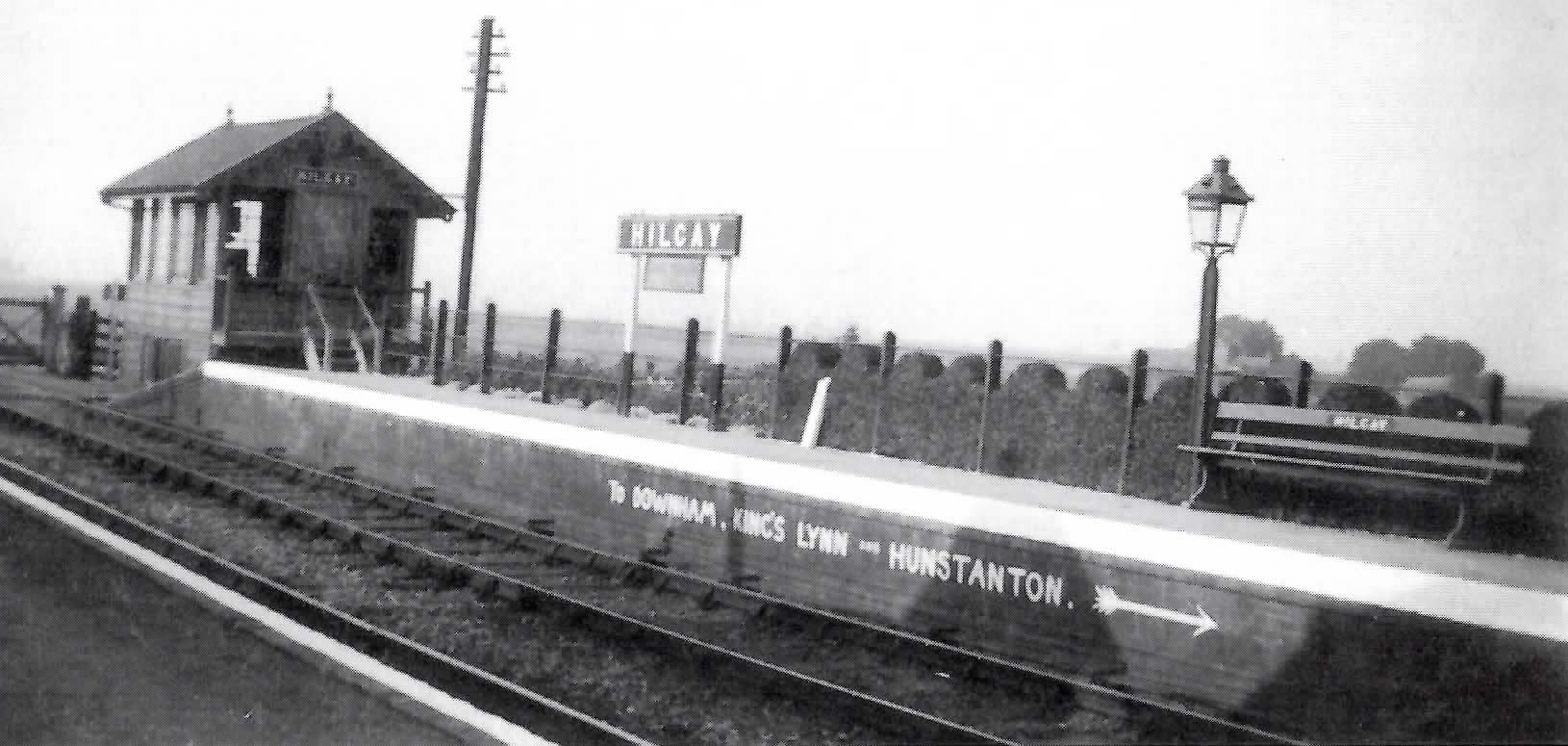 Reproduced from: Ely to Kings Lynn
published by
Middleton Press
Reproduced from: Ely to Kings Lynn
published by
Middleton Press
1896 Renamed
The station was renamed to simply 'Hilgay' on 1st October 1896.
Andrew Jess Gladwin was Station Master. According to Kellys Directory of Norfolk 1896, there was a pillar letterbox here, cleared at 4:40pm daily. Andrew Jess Gladwin is listed as living at Hilgay Fen Station in both the 1890 & 1900 register of electors. Andrew died in 1907 aged 55 years.
Kelly's directory lists A. H. Bloodworth as station master (Unsure of year, sometime after 1904).
The earlier signal box having decorative roof fascia and finals had a very Victorian style.
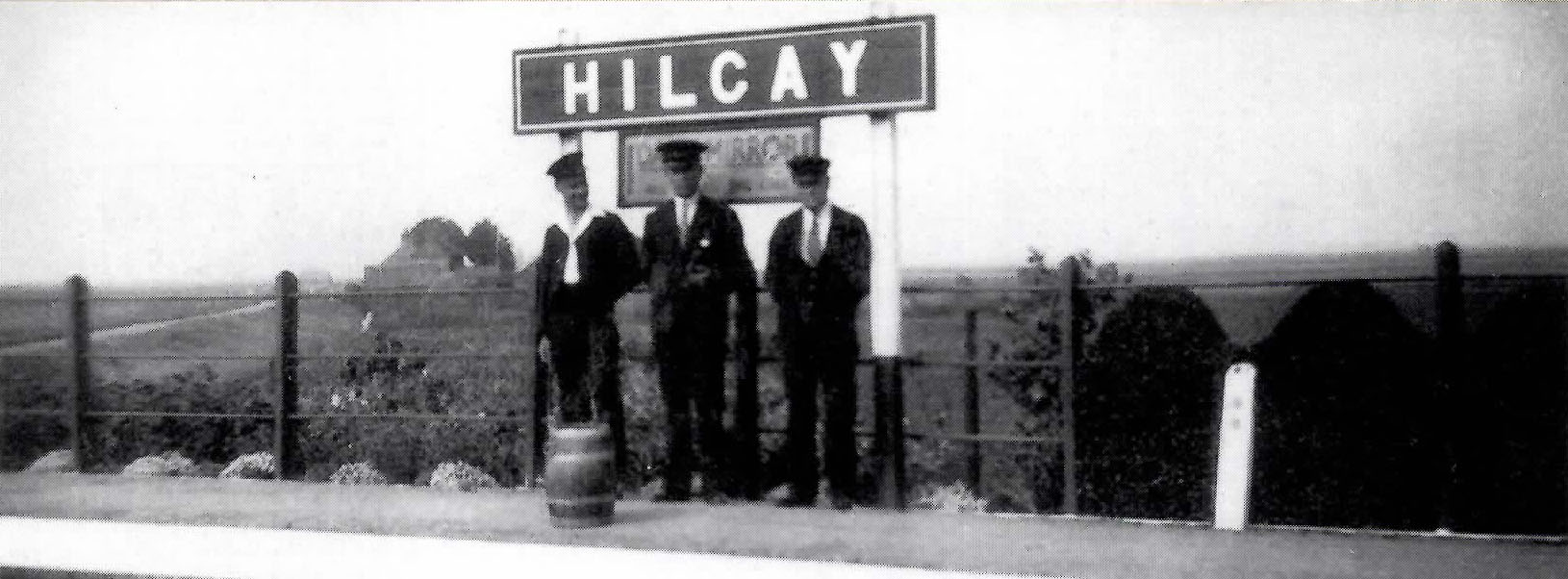 Reproduced from: Ely to Kings Lynn
published by
Middleton Press
Reproduced from: Ely to Kings Lynn
published by
Middleton Press
1939 Rail Disaster
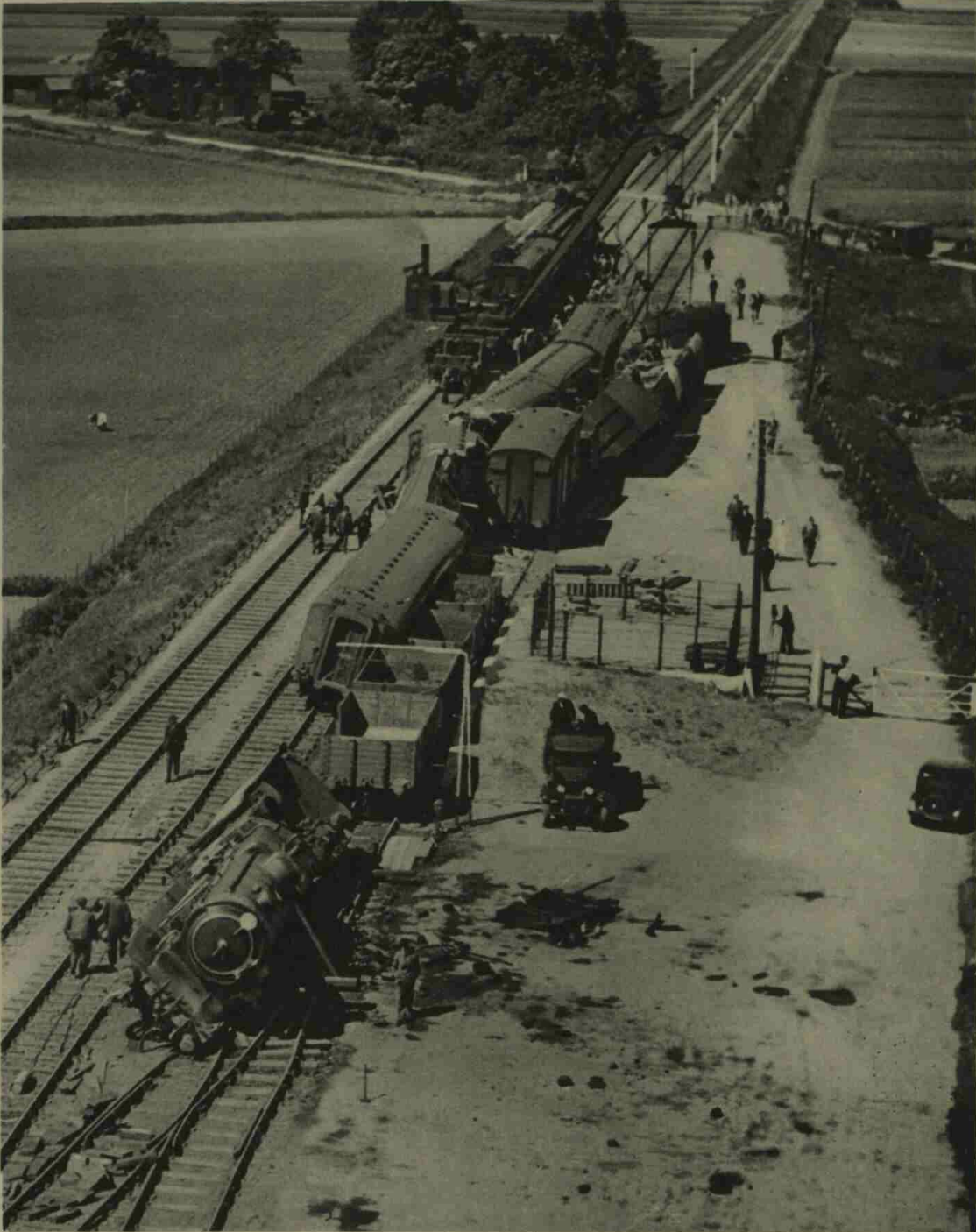
On June 1st 1939, a London bound train collided with a lorry on the Cross Drove level crossing just north of the station. The derailed engine careered into some freight wagons in an adjacent siding before coming to rest just short of the station platform. Four passengers were killed and five seriously injured. One of the fatilities was Lily Picket (49) of Loke Road, Kings Lynn, who was travelling to London for a holiday. She died in Hospital on Friday 2nd June. The lorry driver was Ruben Height, who was accompanied by a youth named A. Pearce. Suprisingly the driver of the lorry survived. After a inquest the blame was laid with Mr Height as he failed to exercise reasonably precations. The driver of the Train was Mr Barber.
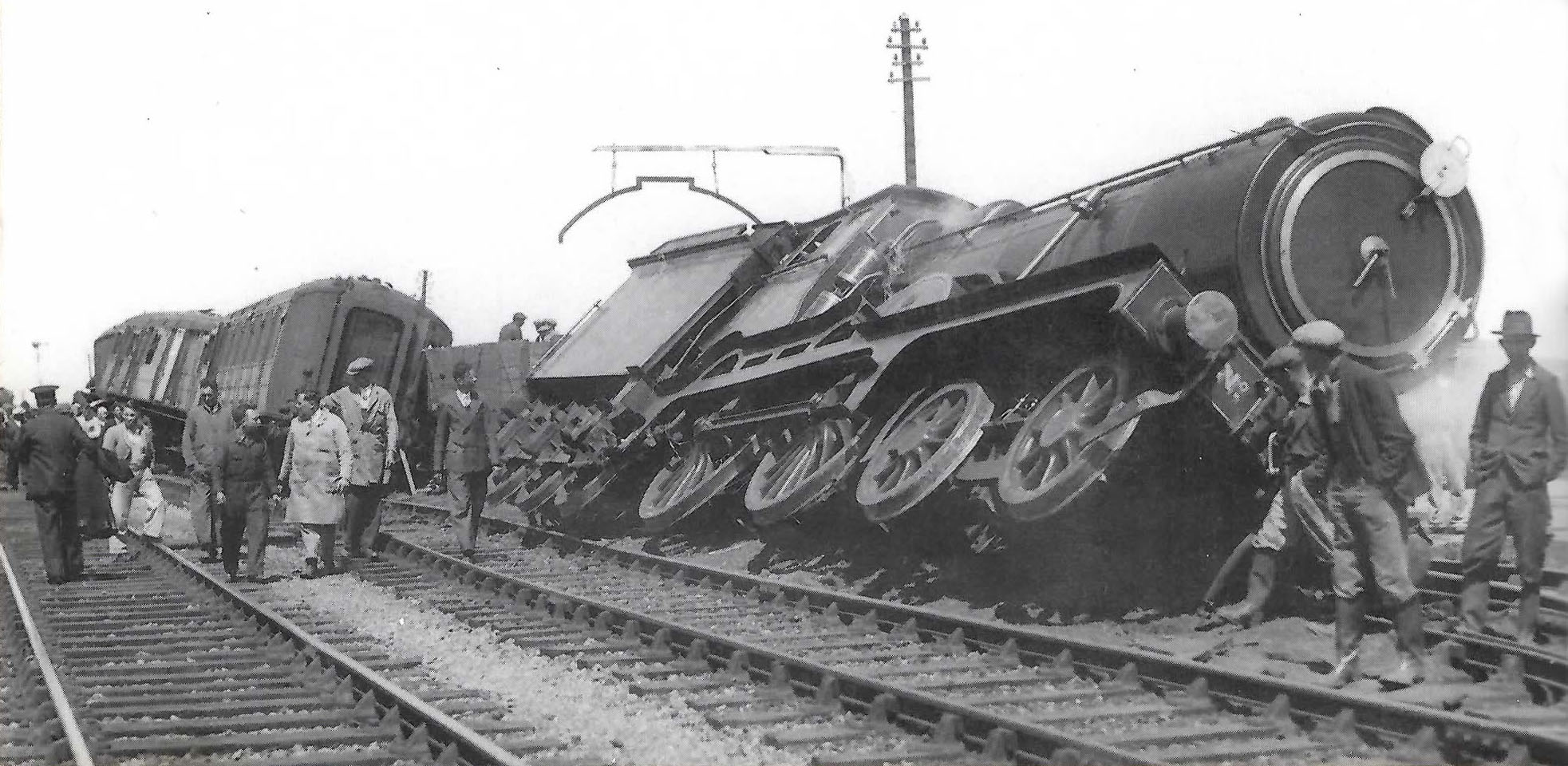 Reproduced from: Ely to Kings Lynn
published by
Middleton Press
Reproduced from: Ely to Kings Lynn
published by
Middleton Press
The engine was a 4-4-0 "Super Claud" number 8783. It was repaired and remained in service until 1958. Based at King's Lynn, its green livery was always maintained to the highest standard as it was one of two engines reserved for royal train duties.
The full history of the engine can be found at the BR Database
At the time of the accident Mr Edmund Petley was relief station master, his clerk was Mr Don Biggs.
More recently in the exact same place a driver was killed
when a First Capital Connect train from King’s Lynn collided with
his silver Kia Sportage in July 2012.
Eastern Daily Press, 13th July 2012
1963 Closure
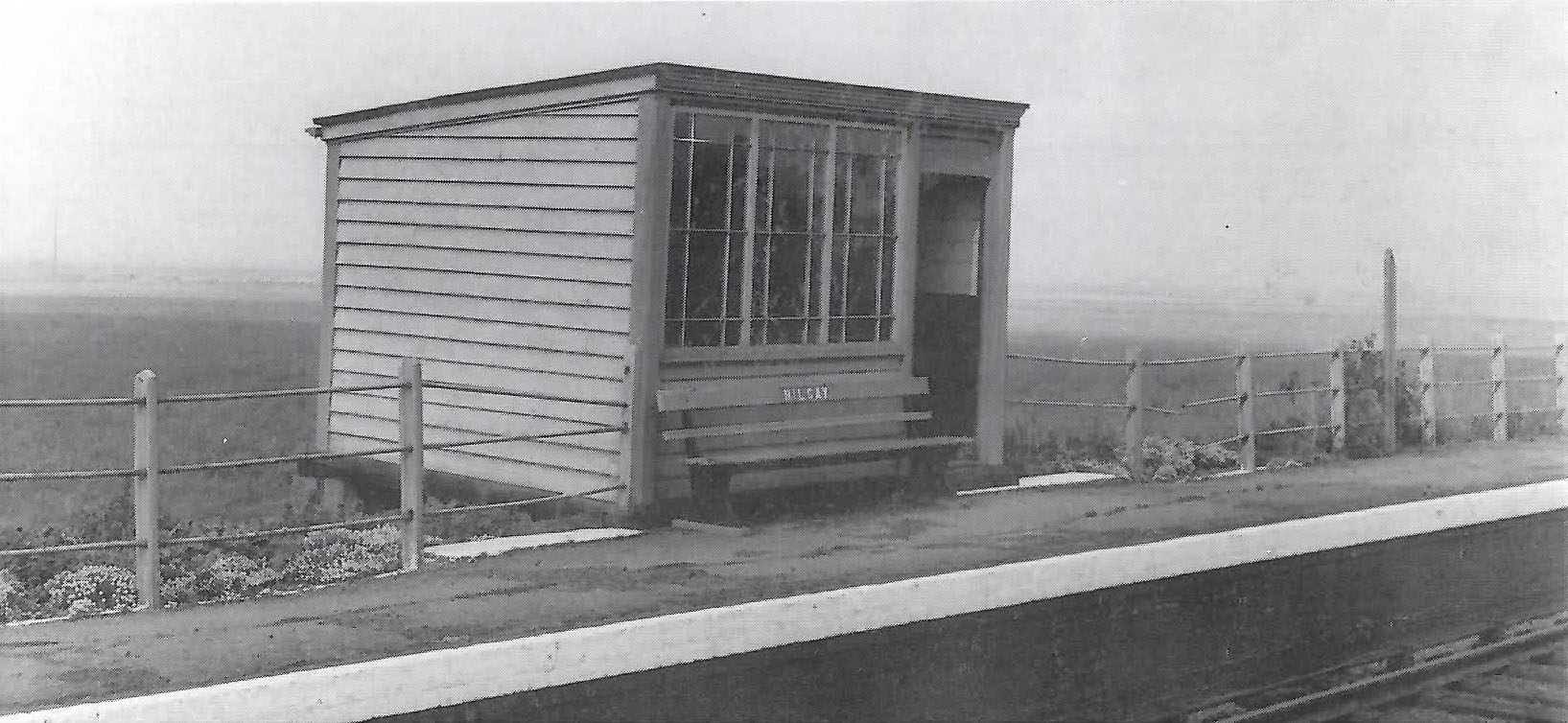 Reproduced from: Ely to Kings Lynn
published by
Middleton Press
Reproduced from: Ely to Kings Lynn
published by
Middleton Press
The station was finally closed to passengers on November 4th 1963, and to freight from 13th July 1964.
Today none of the buildings remain and the platforms have long been removed. However from an aerial view the site of the station can clearly be identified and the extent of the goods yard is evident on the eastern side of the now singled line. The original gate posts at the entrance to the station site remain in situ.
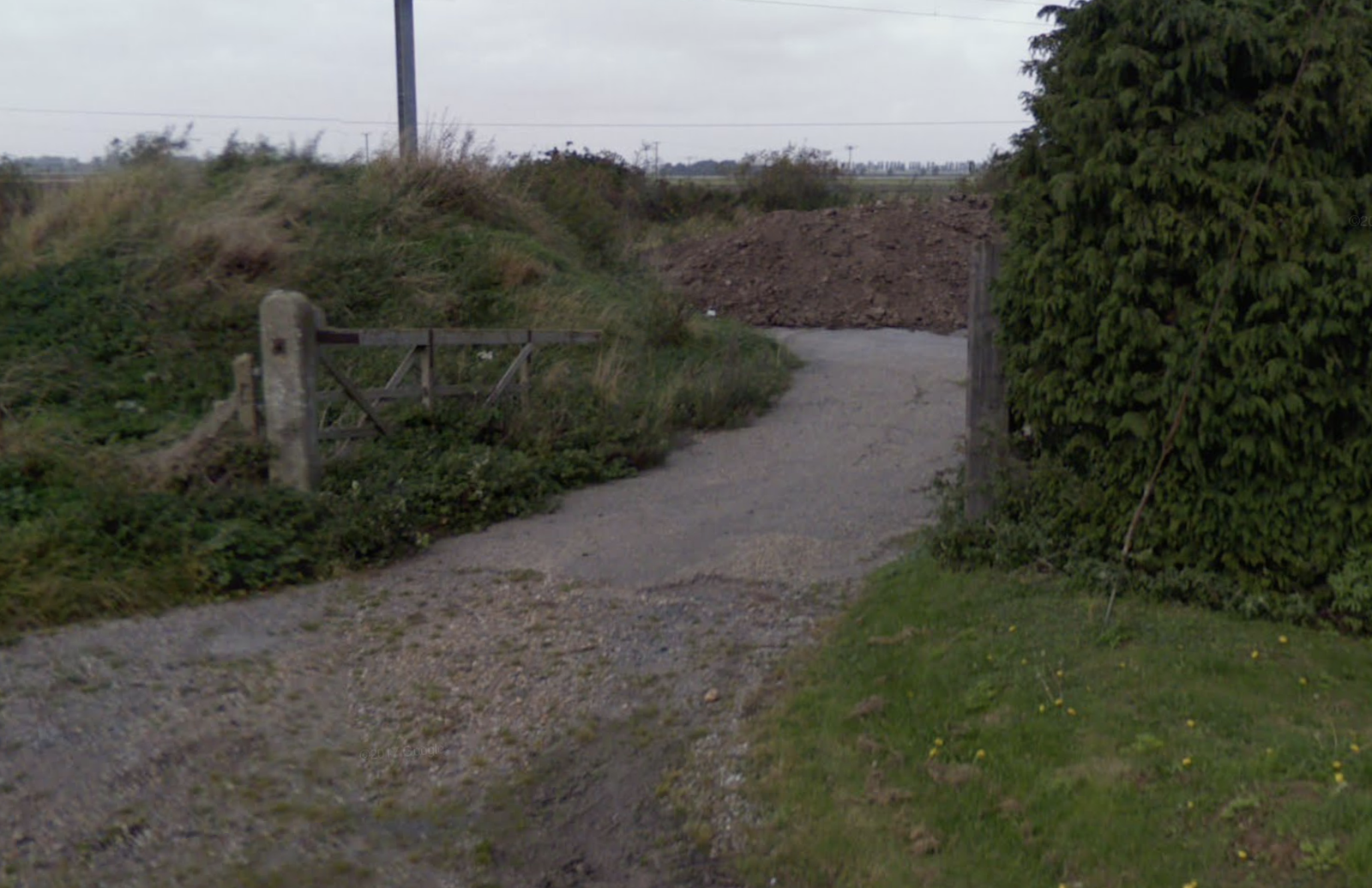
1970s / 1980s Signal box and level crossing
The station and goods yard had a signal box in a similar style to those built at Littleport and Downham Market. The signal box was downgraded to a crossing keeper's cabin in the late 1970s and finally demolished in 1982 when the level crossing at the site was automated.
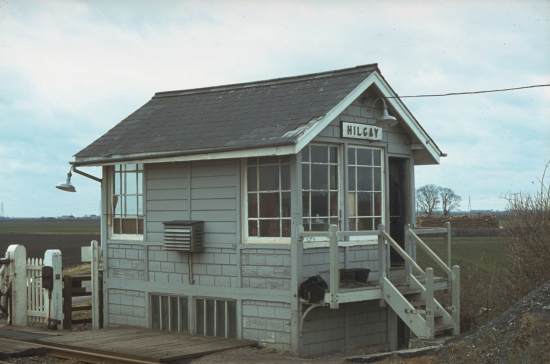 Courtesy of John Hinson, Reproduced with permission.
Courtesy of John Hinson, Reproduced with permission.
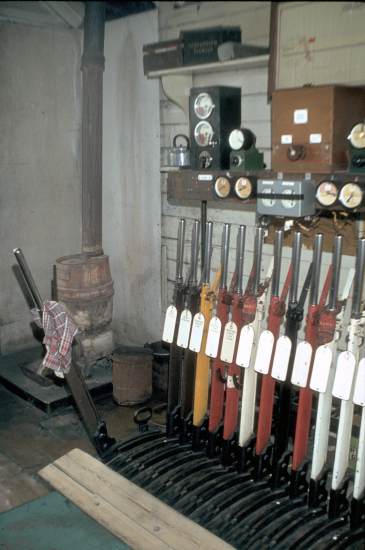 Courtesy of John Hinson, Reproduced with permission.
Courtesy of John Hinson, Reproduced with permission.